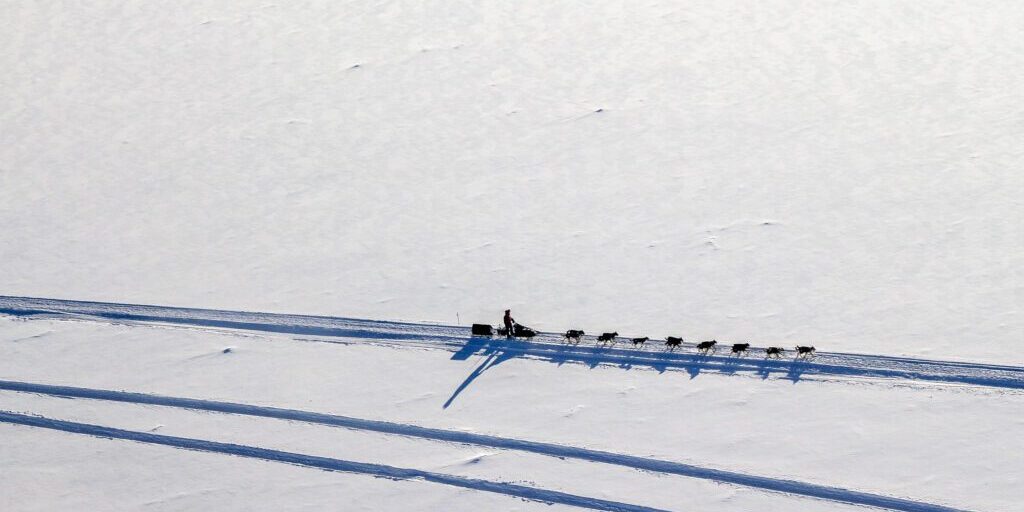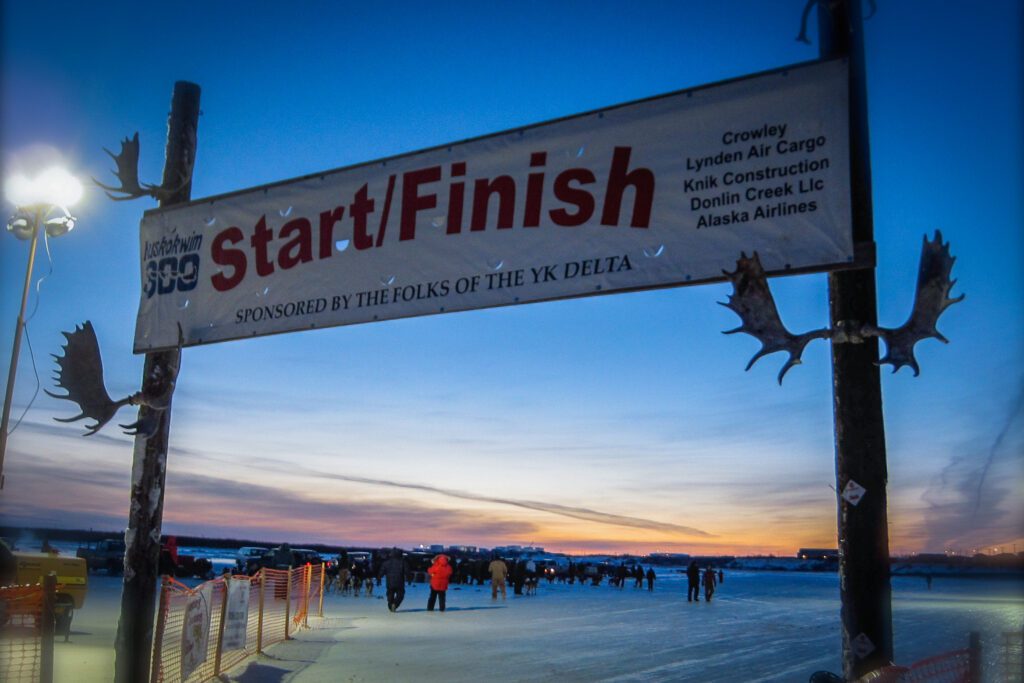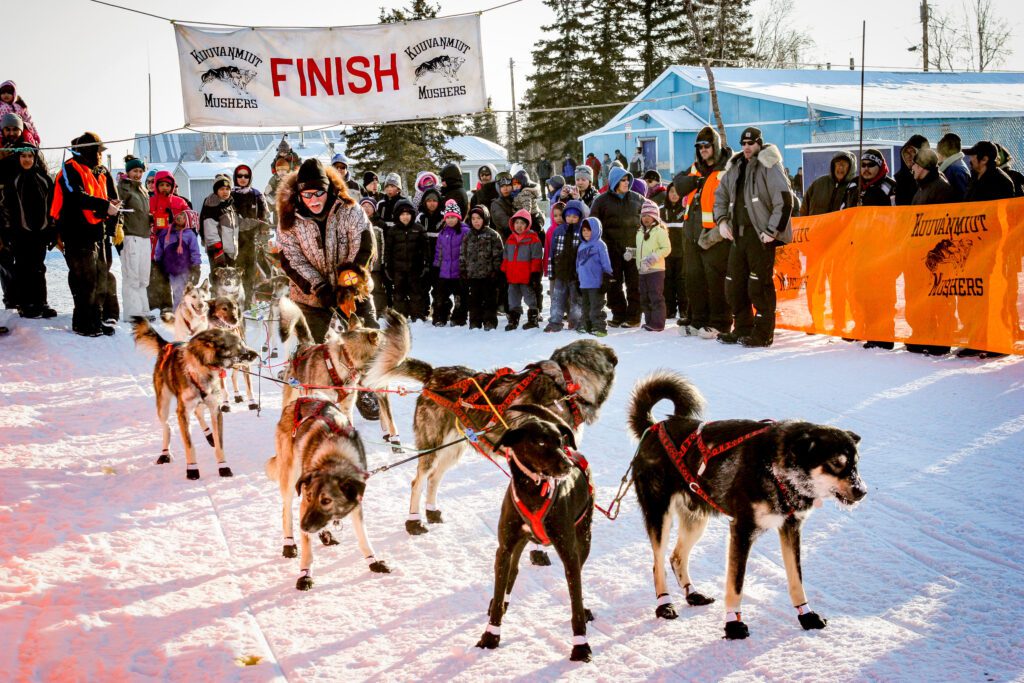Iditarod mushers reached the Yukon River last night at Tanana. As KNOM’s Ben Matheson reports, teams are ready to launch their race plans as the 8-hour and 24-hour rest periods come into view. But first, they must run the longest stretch of the race between checkpoints and make it through the early race with their teams intact.
As the sun went down Tuesday, Nicolas Petit staked his claim as the first musher to the Yukon River. He receives 35-hundred dollars in ones and a five-course meal prepared by chefs at the Lakefront Hotel. But first, he needed to find a guest. Martin Buser, the musher who arrived 36 minutes after him wasn’t up for it.
“The Yukon River dinner? I might? Otherwise, I may have to find someone else. I have to go to sleep; I don’t like all of that hoopla.”
Tanana Mayor Donna Folger presented him with gifts from the community and, ultimately, found him a date.
“You guys arm wrestle for it? Blanche, will you eat with him for me? Yes, Blanche!”
Tanana resident Blanche Edwin joined Petit for the gourmet meal as cameras clicked. Andrew Adlesperger, Food and Beverage Director at the Lakefront Hotel, described the salad course.
“Our sun-dried cranberry pear and gorgonzola salad on fresh springs, and it’s topped with a raspberry lime dressing that Bobby made in house.”
Petit’s team, however ate a less leafy meal in the dog yard at 25 below.
“Chicken fat and chicken skins and beef tripe and kibble. No rib eye steaks. I’ve done that before, and it backfired.”


While Petit ate, several teams pulled into Tanana. Jason Mackey arrived fourth, right behind Mitch Seavey.
“I had no idea there were only three teams here in front of you. I had no clue. Well, I did see a bunch of teams parked.”
Dozens of teams Tuesday afternoon pulled off to the side of the trail and rested in the midday sun before Tanana.
While the forecast is for mellower temperatures, Iditarod Chief Veterinarian Stuart Nelson and his volunteers are playing close attention to the athletes’ body condition over the course of another frigid interior Alaska night.
“Very few dropped dogs, very low numbers. Overall, the dogs are healthy; we want to really monitor the hydration and body weights. But they’re pretty perky and peppy.”

Upon reaching the Yukon, mushers’ mandatory rest strategies are on the horizon: teams can now take their eight-hour rest at checkpoints between here and Kaltag in addition to their 24-hour layover. Mackey wants to get hundreds of more miles behind him before taking the big rest.
“I’m set up in my 24 starting in Galena, and Huslia, Koyukuk and Nulato. If I can get all the way to Nulato, that would be the best, I think. The further you can go for the 24, the better off. There is a slew of teams that are thinking the same way. I can hear them pulling in now; man, they’re screaming.”
Before many take the 8 hour break, teams will head west on the Yukon to Ruby: the longest stretch between checkpoints at close to 120 miles. Petit’s plan is to have options with the gear and supplies he packs.
“I plan on loading up my sled with anything I might need. You see I still have straw? I still have a bunch of food. I don’t make a plan because I don’t know what the trail is going to do, and I don’t know what the weather is going to do, and I don’t know what my dogs are going to do. I just leave equipped for anything.”
For Wade Marrs, the fifth musher into the checkpoint, the next couple runs to Ruby will determine how quickly he needs to bank his big rest.
“If the dog team does really good coming across here, then we’ll take an 8 and keep on going. If they don’t, we’ll take a 24 when we get to the end of this run and go from there.”
25 minutes behind Marrs was Bethel musher Pete Kaiser.
“I prefer to take my 24 first; we’ll see how it goes. It all depends on what the dogs need at any given time. It’s nice to have the option for either from now on. But I don’t think we’ll need either of them, here.”
Mushers will drive their teams west early Wednesday, with both options at hand and hard choices to make.








